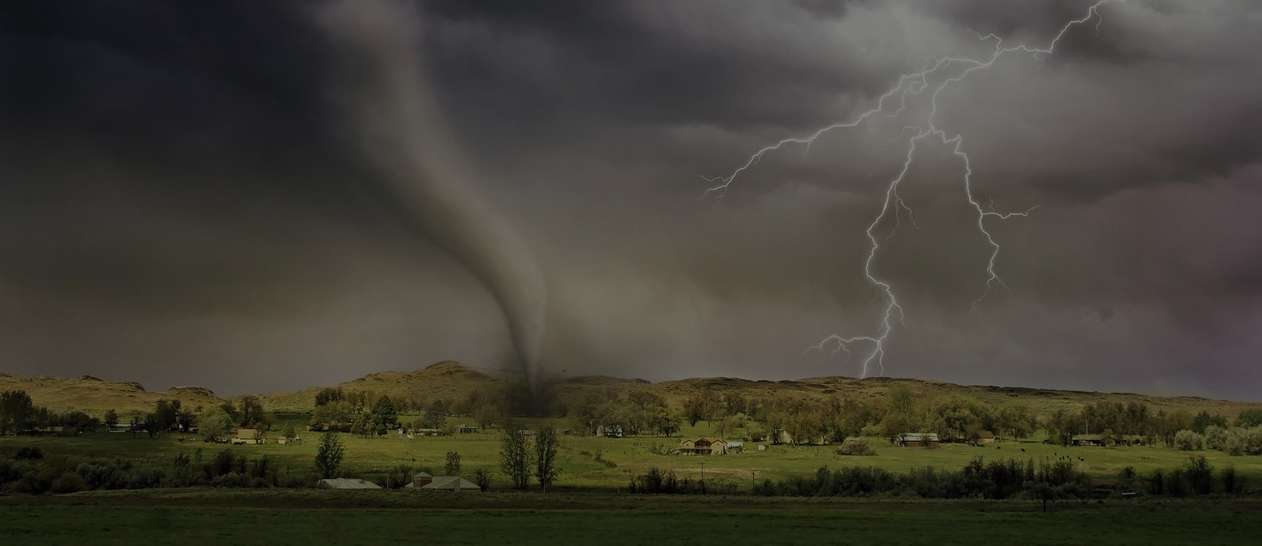
With all the disasters and wars happening recently, preparing becomes this massive and overwhelming task no one wants to even glance twice at. Not to mention, every country is different regarding climate, government, and culture. The available resources are all different.
There are two very important steps to take in preparation for disasters. Firstly, observe the environment for common weather patterns and disaster susceptibility. Then, gather the necessary tools and resources available in the area which could help relieve pain and stress during a disaster.
You may be wondering how to do that. Besides, everything sounds easier than the actual practice, right? Not necessarily. With a little organization and some patience, preparation isn’t so difficult.
Observe Your Environment and Recognize Weather Patterns.
The first step is to observe the environment and recognize weather patterns. I’m not saying you should get all scientific, pull out your telescope, and be like the guy off of The Day After Tomorrow. It isn’t necessary to be super smart to prepare. It’s all about taking small, consistent steps towards your destination.
Think about where you live. Is it dry? Is it wet? Tropical? Desert? All of these will affect the type of food storage and the type of emergency items you’ll need. Living in the mountains where there isn’t a beach in site is going to change what you prepare.
I lived in Brazil for almost 2 years. The environment was a stark contrast from where I grew up. I come from a state considered to be a wet desert. In the winter time it gets especially dry and cold. I’m applying lotion over and over again just to not turn into a flaky pastry. The summertime is also dry and getting a sunburn is the worst! It’s a little better, but not by much.
Living in Brazil I had to stop using lotion all together. I had to hang my clothes to dry and it took as long as three or for days for them to dry and even then it wasn’t complete. Not to mention, food went bad and rotted quicker than I’d ever seen in my life! Where I’m from food lasted longer. My household companions native to the country would always get mad at me because I would leave things out or do things which would have been fine and appropriate in my state, but ruined our food in Brazil. (oops:))
It’s extremely important to do your research before you go out and buy a ton of emergency items. Don’t go without planning and thinking about it. Know your environment!
Disaster Preparation for Wet/Humid Environments

Wet/Humid environments need things that are waterproof. Not only that, but clothes shouldn’t be made of material like polyester or anything made to keep heat in. You want to keep the heat out as much as possible. Also, mold is very common in wetter climates, so whatever you store, I would suggest moth balls. I used A LOT of moth balls when I lived in Brazil.
You might wonder how this applies to a disaster. What if you lose your home and you have to wander a while to find shelter? What if you have to make your own shelter in that environment? Waterproof items and cool clothing that doesn’t mold would make the process smoother and easier.
Regarding food; many Brazilians who prepared food storage used containers like 2 liter plastic soda bottles to store rice and beans. They eat a lot there so it’s a good way to keep the food uncontaminated and it won’t rot. However, any kind of container which is waterproof and prevents contamination is a good option.
Also, there isn’t likely to be a lack of water, but there will be a lack of clean water. Most of the water in any tropical or humid disaster will likely be contaminated. It doesn’t matter where you live, water is a big issue you need to be prepared for.
Disaster Preparation for Dry Environments
Dry environments don’t have the same problems as humid ones. They obviously present their own types of problems. Dry environments may not have ANY water to speak of, not even water that can be purified. In which case, you need to be prepared in advance with a storage of water. Water to bathe and drink needs to be considered.
A common type of a disaster for a dry environment, thinking on a small scale, is a drought. You may not be worried because you can go to the store and buy stuff, but droughts affect farmers and anyone who grows things. What then? How do animals live and crops grow? These examples are hypothetical, though many have happened before.

Knowing what each type of environment is prone to is a good way to start knowing what you need to prepare. I grew up in a dry environment. I’m not as bothered or worried about certain preparations regarding such an environment because of my upbringing. But, not all dry environments are created equally. I’m from a wet desert; though it gets very dry, it isn’t the Mojave desert. (Thank goodness!)
That being said, if you know whether yours is a wet or dry desert, that’ll change what you prepare. Remember, in preparation it’s better to keep it simple. Going to extreme lengths to buy the most expensive equipment isn’t as important as knowing what you could face and finding the best quality resources out there. What always works and never fails? (I would suggest testing equipment out before you decide to settle on anything)
Types of Disasters and Problems They Create
Different disasters present different challenges and problems. You may not have to worry about all of these disasters but they will apply to some of you and certain areas of the world.
Here is a list of disasters and some of the problems they create:
- Tornado
This type of disaster blows things away and demolishes houses. It’s winds can reach unimaginable speeds and are very dangerous. Finding a tornado shelter to wait it out is the best course of actions. If you live in a place which is more prone to this type of disaster, you should know where to find the nearest shelter in your area. For more information, visit this website. - Hurricane
Contamination of water supply, immersion of homes, and destruction of cities are all very likely possibilities with a hurricane. Anyone who lives on an island or coastal area could be in danger. Thankfully, modern technology allows us to be warned and aware of when a hurricane will hit to minimize the damages and deaths, but knowing if you fall into this category can help you prepare the right type of storage and emergency supplies. - Drought
Anywhere is susceptible to drought, but certain states and counties have them more often than others. If your area is prone to long periods of time without water, you should invest in an ample supply of water if you haven’t already. You never know when it can happen. Often times when we think of disasters the simplest troubles come to mind; the idea of being without water. However, you have to know what a lack of water means. It means the air will be dry, the plants won’t grow, many are in danger of heat stroke, and so on and so forth. - Flood
Just with a hurricane floods will destroy homes and contaminate water supplies. Though a flood is not always as violent as a hurricane, it has its own way of making life difficult and reaping destruction. Don’t get into your mind though that a flood is only a minor disaster. It can become a major one if there’s enough water. It can destroy equipment, supplies, and resources not just in your home, but in schools, supermarkets, and all sorts of places that carry the supplies you need. Get them in advance! Don’t wait. - Volcano Eruption

Though I haven’t heard much about what to do in a volcano eruption, it would stand to reason that those people who live near a volcano are aware of it. If you aren’t, I’d make sure I was. For example, all of those who live near Yellowstone National Park are near several volcanoes and geysers which were supposed to erupt several years ago and haven’t. When they do erupt, it’s said that will cover several states. During that time, there will be no possibility of growing anything at all for years because of all the ash. People will have to find others means of nutrition and nourishment. - Earthquake
This disaster and topple huge buildings and open up chasms and rifts in the earth. It has time and again devastated many cities and the process of reconstruction can sometimes take years. Some places like the country of Chile, for example, is used to this type of disaster. My suggestion would be to look into how they deal with it and learn from their experience. Earthquakes can happen just about anywhere, so being prepared for an earthquakes type of destruction should be on your list.


